A couple of days ago, I looked at the visual shadow and dynamic range effects of the Sony alpha 7 shutter modes that reduce the bit depth from 13 to 12 bits. In the case of the Sonys, the loss in bit depth is accompanied by an increase in read noise that results in visible shadow impairment at ISO 100 when the shadows get a 5-stop push in Lightroom, and a little at ISO 200 when the shadows get a four-stop bump. At ISO 400 shadows with a five stop push are marginally affected.
Contemporary Nikons normally write 14-bit losslessly compressed raw files, but the camera has a mode that changes the bit depth to 12 bits, presumably with no increase in read noise save the quantizing component. Will the affect shadow detail?
I put a Sigma 50mm f/1.4 Art lens on a D810, mounted the camera to the RRS L-bracket, the bracket to an Arca-Swiss C1 head, the head to a RRS tripod, aimed the camera at the bookcase I usually use for this test. I focused wide open with live view. I set the camera for 14-bit raw. I set the f-stop to f/5.6, the shutter to 1/40 second, the ISO to 2000, the shutter to mirror up with a 3-second delay, and made an exposure. Varying nothing but the ISO setting, I made five more exposures at ISO 1000, 500, 250, 125, and 64.
Then I set the camera for 12-bit raw and repeated the series.
I developed the images in Lightroom 5.7.1 with default settings except for turning off sharpening and noise reduction. Then I set the Exposure control on the ISO 64 images to +5, the Exposure control on the ISO 125 image to +4, the Exposure control on the ISO 250 image to +3, the Exposure control on the ISO 500 image to +2, the Exposure control on the ISO 1000 image to +1, and didn’t adjust the Exposure of the ISO 2000 image.
Here’s the overall scene:
Here’s the five-stop underexposed image before the push:
I cropped the images and magnified them by a factor of two.
Here are the images with the five stop push:
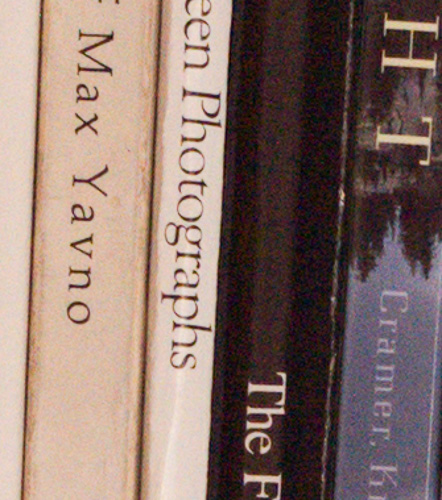
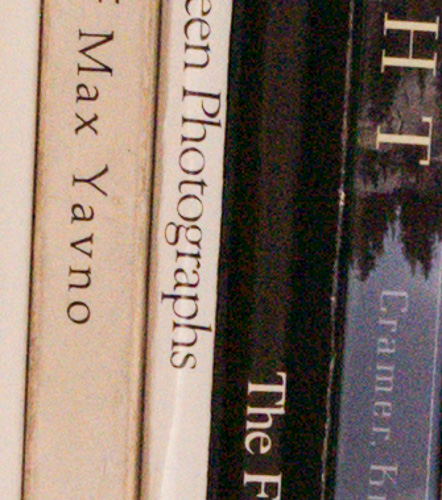
The differences are minor.
With a four-stop push:
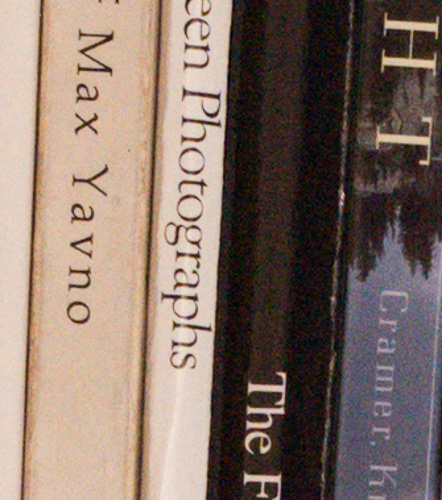
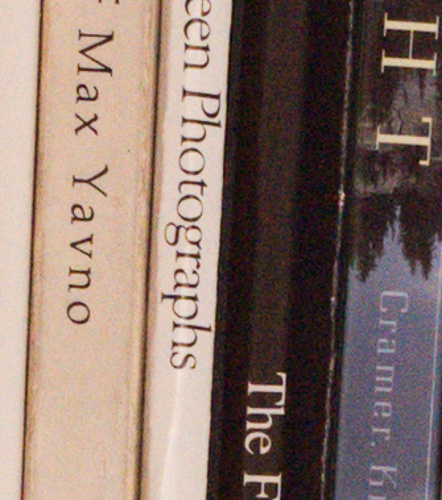
The differences are even less.
Nikon 12 bit lossless raw doesn’t save a ton of space, but it is pretty gentle on the image quality.
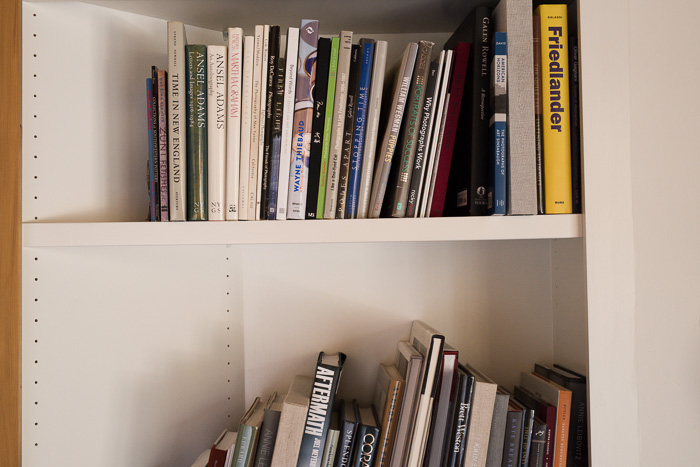
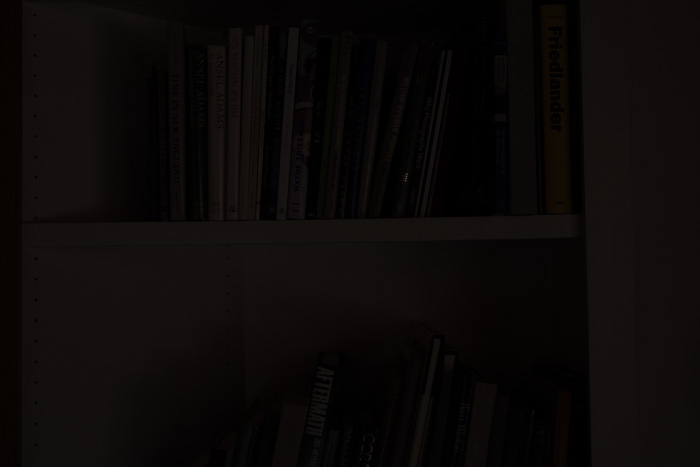
and some people say why we dont have 16bit in 35 format DSLRs as MF cameras have? Seems we dont need it at all
Thanks Jim, nice to know… and how well underexposer works till -4EV. I did not expected it!!!
Thanks for the test, confirms my findings. Great work!
Isn’t there more than shadow noise (and dynamic range) in image quality? I mean, how are affetted by the 12bit format color depths and accuracy (and the ability to recover white bilance and tone)?
My .02
I would love to see how/if highlight retention is affected by 12bit vs 14 bit. I’m suprised that 14bit’s shadows do show different noise characteristics.
Thank you for your test!
The highlights are virtually unaffected by the bit depth. The photon noise swamps out any differences.
I am just wondering. How much of the measured difference presented in your other post can be seen here due to the 8 bits of our monitor?
Pretty much all of it, assuming your monitor is calibrated and uses a gamma of 2.2. Another question would be how much is encoded in the 8-bit sRGB JPEG file? The answer to that is a little over 11 bits, because of the sRGB tone curve.
If you look at the pushed images, you can see more of what’s going on in the shadows, since the push raises the effective file bit depth by one bit per stop.
Jim